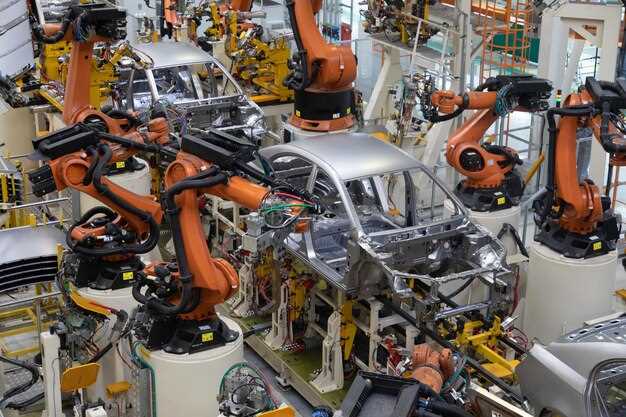
The automotive industry has been facing significant challenges due to the ongoing global chip shortages, which have resulted in widespread delays in vehicle production. As car manufacturers increasingly rely on advanced technology, the demand for semiconductors has surged, outpacing the available supply. This imbalance has created a ripple effect throughout the industry, impacting everything from assembly lines to consumer pricing.
Chip shortages have not only hampered the production of new vehicles but have also altered the strategies of car manufacturers. Many companies have been forced to temporarily halt their production lines, resulting in lost revenue and delayed deliveries for consumers. As the situation evolves, manufacturers are re-evaluating their supply chain strategies and looking for ways to mitigate future risks associated with chip availability.
The ramifications of these shortages extend beyond the immediate manufacturing challenges. The increasing delays in car production contribute to higher prices in the market and a growing demand for used vehicles, causing shifts in consumer behavior. As the industry navigates these unprecedented circumstances, the long-term effects of the chip shortage will likely shape the future landscape of car manufacturing.
Analyzing the Root Causes of the Semiconductor Crisis in Automotive Sector
The semiconductor crisis in the automotive sector has been exacerbated by a confluence of factors that have led to significant shortages of chips. One major cause is the abrupt increase in demand for electronic components across various industries, particularly during the COVID-19 pandemic. As consumers shifted toward remote work and digital services, the tech sector experienced a surge in production, diverting resources away from automotive chip manufacturing.
Another critical factor contributing to delays in chip supply is the complexity of the semiconductor manufacturing process itself. Producing chips requires substantial investments in specialized equipment and facilities, which can take years to develop. Additionally, the manufacturing capacity for automotive chips is often lower than that for consumer electronics, resulting in a supply chain that is less agile and more vulnerable to shocks.
Moreover, geopolitical tensions and trade restrictions have played a role in disrupting the semiconductor supply chain. The ongoing trade disputes, particularly between the United States and China, have led to uncertainties that affect manufacturers’ decisions regarding production and distribution. These geopolitical factors have compounded the existing vulnerabilities in the automotive supply chain, further contributing to the ongoing shortage.
Lastly, a lack of foresight from automotive manufacturers has also played a role in the current crisis. Many automakers cut chip orders during the initial stages of the pandemic, assuming a significant decline in vehicle sales. However, as demand rebounded more quickly than anticipated, they found themselves facing delays as suppliers struggled to ramp up production levels in response to this unexpected surge.
In summary, the semiconductor crisis in the automotive sector is the result of increased demand, manufacturing complexities, geopolitical factors, and miscalculations by manufacturers. As the industry seeks to recover, addressing these root causes will be essential to preventing similar crises in the future.
Impact of Chip Shortages on Production Schedules and Delivery Times

The ongoing global chip shortage has significantly disrupted the automotive manufacturing industry. As vehicles become increasingly reliant on advanced electronics, the shortage of semiconductors has led to severe production challenges. Many automakers have had to revise their production schedules, resulting in unplanned factory shutdowns or reduced output rates.
Delays in the availability of essential components have forced manufacturers to prioritize specific models, often leading to a backlog of orders for less popular vehicles. This shift means that consumers are faced with extended waiting periods for their vehicles, as manufacturers struggle to balance supply and demand amid the chip shortage.
Furthermore, these delays can have a cascading effect on the entire supply chain, impacting not only the automakers but also suppliers and dealerships. While some companies have managed to secure alternative sources or adjust their production strategies, the overall impact of the semiconductor shortage remains profound and could take years to fully resolve.
In conclusion, the chip shortages continue to create a challenging environment for car manufacturers, with significant consequences for production schedules and delivery times. Stakeholders must adapt to this reality in order to navigate the complexities introduced by this crisis.
Strategies for Automakers to Mitigate Supply Chain Disruptions

As the global chip shortage continues to affect the automotive industry, manufacturers must adopt innovative strategies to ensure stable production and minimize disruptions. One effective approach is to diversify the supplier base. By sourcing chips from multiple suppliers, automakers can reduce dependency on a single source, thus mitigating risks associated with supply chain failures.
Investing in long-term partnerships with chip manufacturers is another critical strategy. Collaborating closely with suppliers allows automakers to secure priority access to necessary components and negotiate favorable terms. This proactive engagement helps build resilience against unforeseen shortages in the future.
Additionally, increasing inventory levels of essential chips can serve as a buffer during times of scarcity. While just-in-time production has its benefits, maintaining a strategic reserve of crucial components ensures that production lines remain operational even when supply is constrained.
Automakers should also explore vertical integration by investing in chip manufacturing capabilities or establishing joint ventures with semiconductor companies. By controlling some aspects of the production process, manufacturers can streamline operations and reduce reliance on external suppliers.
Lastly, embracing technological innovations, such as artificial intelligence and data analytics, can enhance supply chain visibility and efficiency. By predicting potential bottlenecks and adapting rapidly to changes in demand, manufacturers can respond more effectively to supply chain disruptions, ensuring continuity in chip supply and vehicle production.




